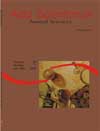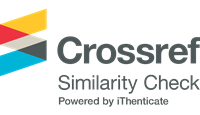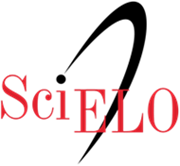<b>Ciliated protozoa in the rumen of cattle under different levels of undegradable protein diets</b> - DOI: 10.4025/actascianimsci.v25i1.2146
Abstract
The experiment was carried out at the Zootechny and Food Engineering Faculty of Universidade de São Paulo (São Paulo University - Brazil), and it aimed to study the pH variation and also to identify and to qualify the ciliated protozoa in the rumen of cattle under 24%, 30%, 36% and 42% of undegradable protein (PNDR) diets, named as treatments A, B, C and D, respectively. All the diets had the same protein and energy concentration (11% CP and 63% TDN), and they were composed of soybean meal, corn barley and sorghum grains, blood and meat meal, corn silage, limestone, salt and urea. Four crossbred European x Zebu steers, having a mean weight of 600kg and holding a rumen cannulae were utilized in a 4 X 4 Latin Square design, with four periods, each one containing 21 days of adaptation. On day 23 and 24 of each period, rumen fluid samples were taken for pH determination. The results showed that pH was affected by PNDR level, with significant difference of collection time after feeding (p < 0,05), and the presence of urea on diets A and B resulted in an intense ureal activity in the rumen, which stimulated the multiplication of ciliated protozoa of the genus Entodinium spp (p < 0,05).Downloads
Download data is not yet available.
Published
2008-04-17
How to Cite
Coalho, M. R., Nogueira Filho, J. C. M., Cunha, J. A., & Lima, C. G. de. (2008). <b>Ciliated protozoa in the rumen of cattle under different levels of undegradable protein diets</b> - DOI: 10.4025/actascianimsci.v25i1.2146. Acta Scientiarum. Animal Sciences, 25(1), 193-199. https://doi.org/10.4025/actascianimsci.v25i1.2146
Issue
Section
Animal Science
DECLARATION OF ORIGINALITY AND COPYRIGHTS
- I Declare that current article is original and has not been submitted for publication, in part or in whole, to any other national or international journal.
The copyrights belong exclusively to the authors. Published content is licensed under Creative Commons Attribution 4.0 (CC BY 4.0) guidelines, which allows sharing (copy and distribution of the material in any medium or format) and adaptation (remix, transform, and build upon the material) for any purpose, even commercially, under the terms of attribution.
Read this link for further information on how to use CC BY 4.0 properly.
0.9
2019CiteScore
29th percentile
Powered by 








































